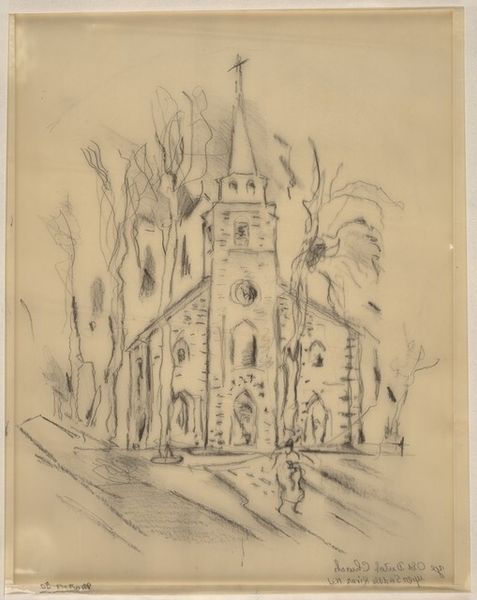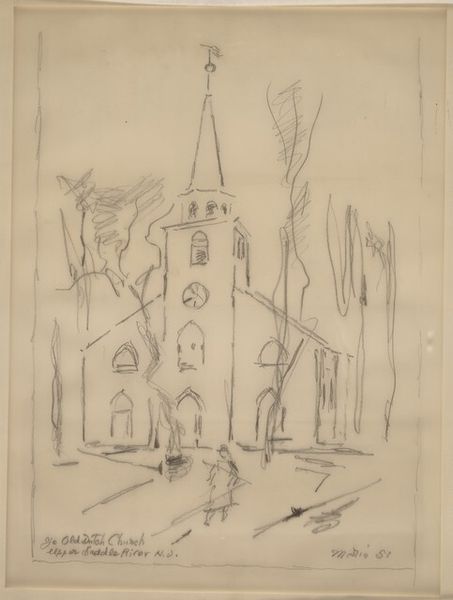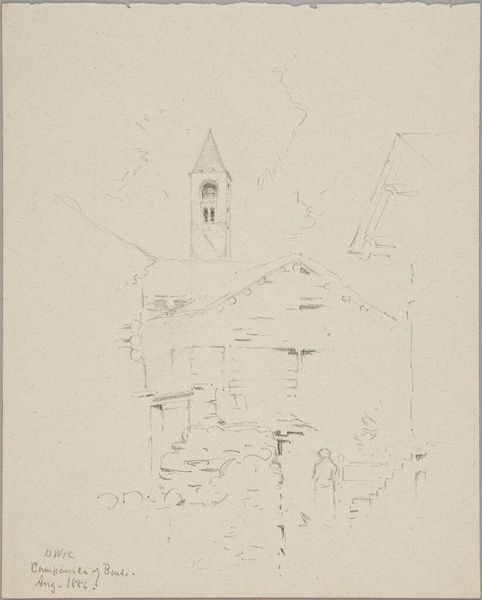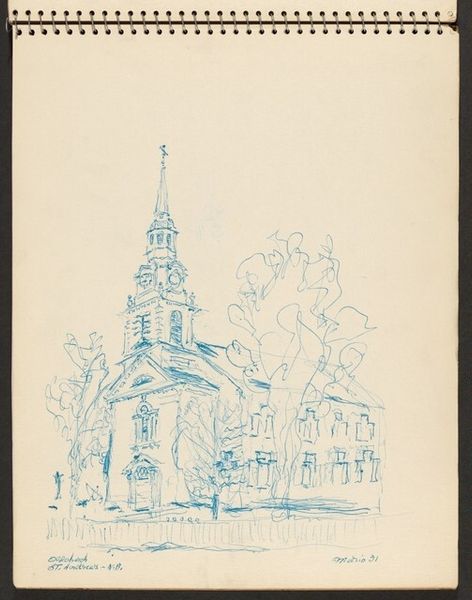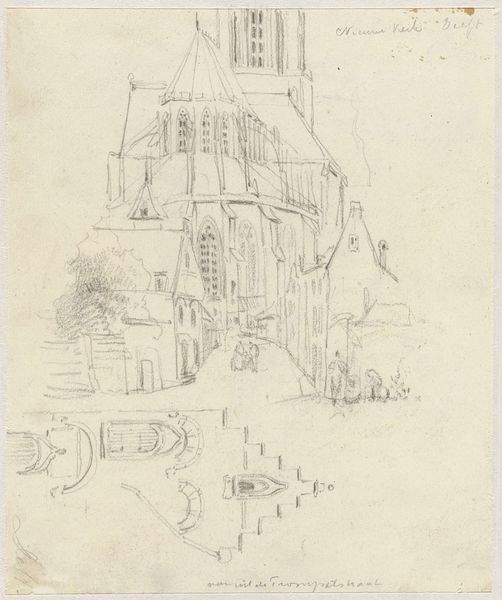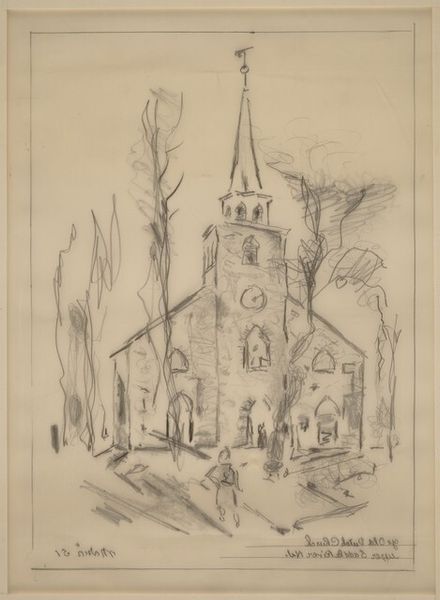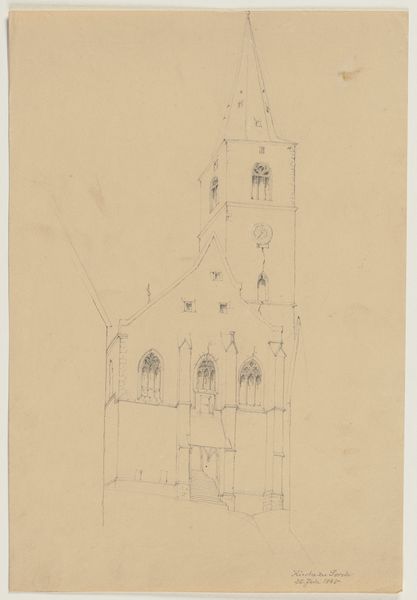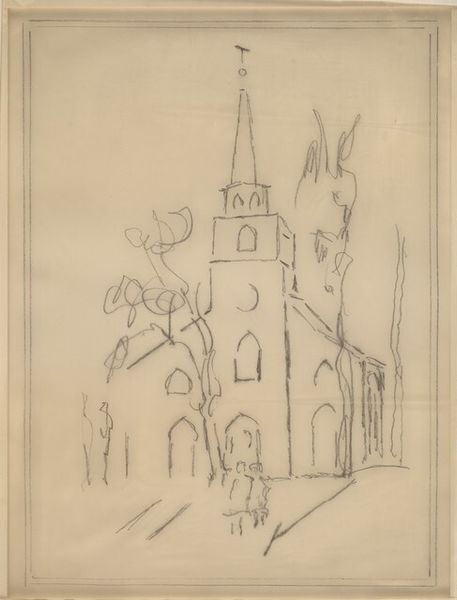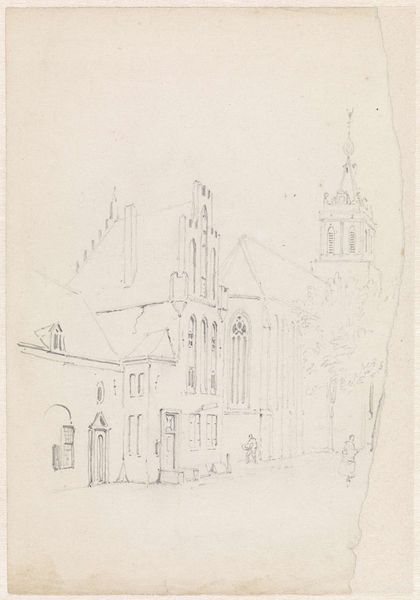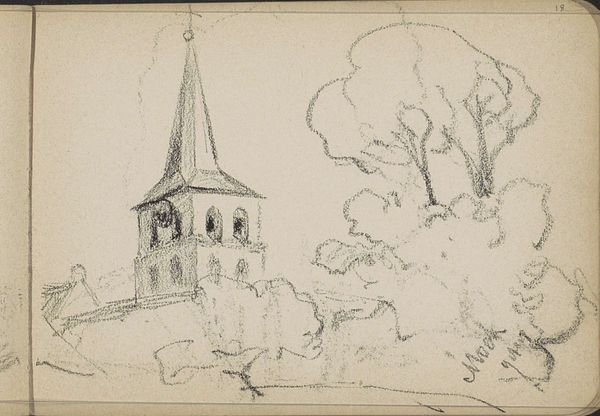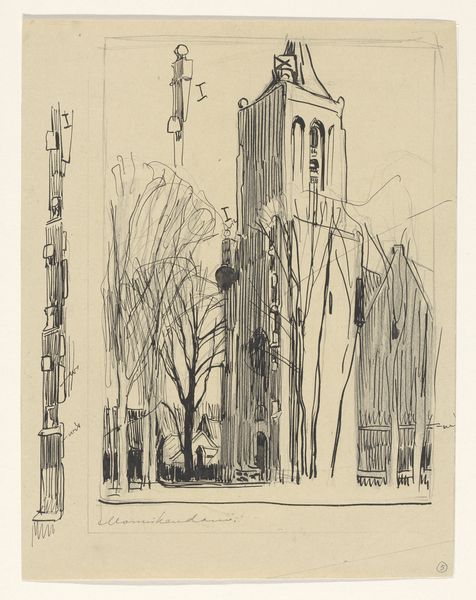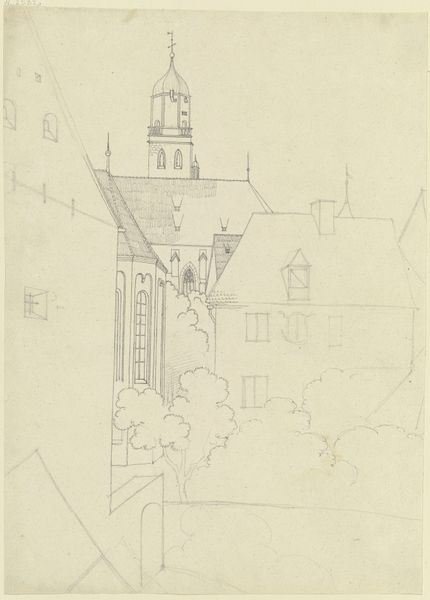
drawing, graphite
#
drawing
#
landscape
#
graphite
#
cityscape
#
modernism
#
realism
Dimensions: sheet: 35.24 × 27.94 cm (13 7/8 × 11 in.)
Copyright: National Gallery of Art: CC0 1.0
Curator: John Marin's "Old Church, Newburyport, Massachusetts," rendered in graphite in 1951, is a striking example of his urban landscape drawings. Editor: There's a haunting quality to it, isn't there? The sketch feels like a memory, almost ephemeral, with those barely-there lines framing the central structure. Curator: Marin’s draftsmanship, apparent through the stark monochromatic application of graphite, articulates a church framed by bare trees in winter. He juxtaposes stark detail, particularly visible in the steeple and main entrance, with areas rendered with greater abstraction. Editor: But I can’t help but wonder what stories this church holds within its walls. Beyond the pure artistic representation of this landmark, what about the parishioners who have sought solace here through the years? Churches are not only buildings but vibrant centers of their communities. What were the socio-political dialogues happening in this area when Marin sketched this piece in 1951? Curator: It’s precisely that balance of solidity and fluidity that captivates. Look how Marin uses short, angular lines to depict movement around a mostly static structure. Note too that the composition leads the viewer’s eye up the page from the heavily marked road to the lighter areas surrounding the top spire of the building. The values progress smoothly from the bottom to the top of the sheet. Editor: Absolutely, and it begs a deeper examination. Newburyport was a developing city with the construction of various projects related to social housing and public amenities in that postwar time frame. What narrative threads does the placement of a somber and permanent church structure, amidst that societal movement suggest? What possibilities did that physical building provide for that community? Curator: These observations contribute to a far deeper reading. Ultimately, though, what remains with me is Marin's extraordinary ability to evoke a sense of place with minimal means, revealing the strength of structural economy and attention to the principles of design in composition. Editor: It reminds us that buildings are silent witnesses to the ebb and flow of humanity, structures layered with memory and meaning beyond their architecture. Understanding their visual aesthetic coupled with their purpose, then and now, remains our most pressing challenge.
Comments
No comments
Be the first to comment and join the conversation on the ultimate creative platform.
